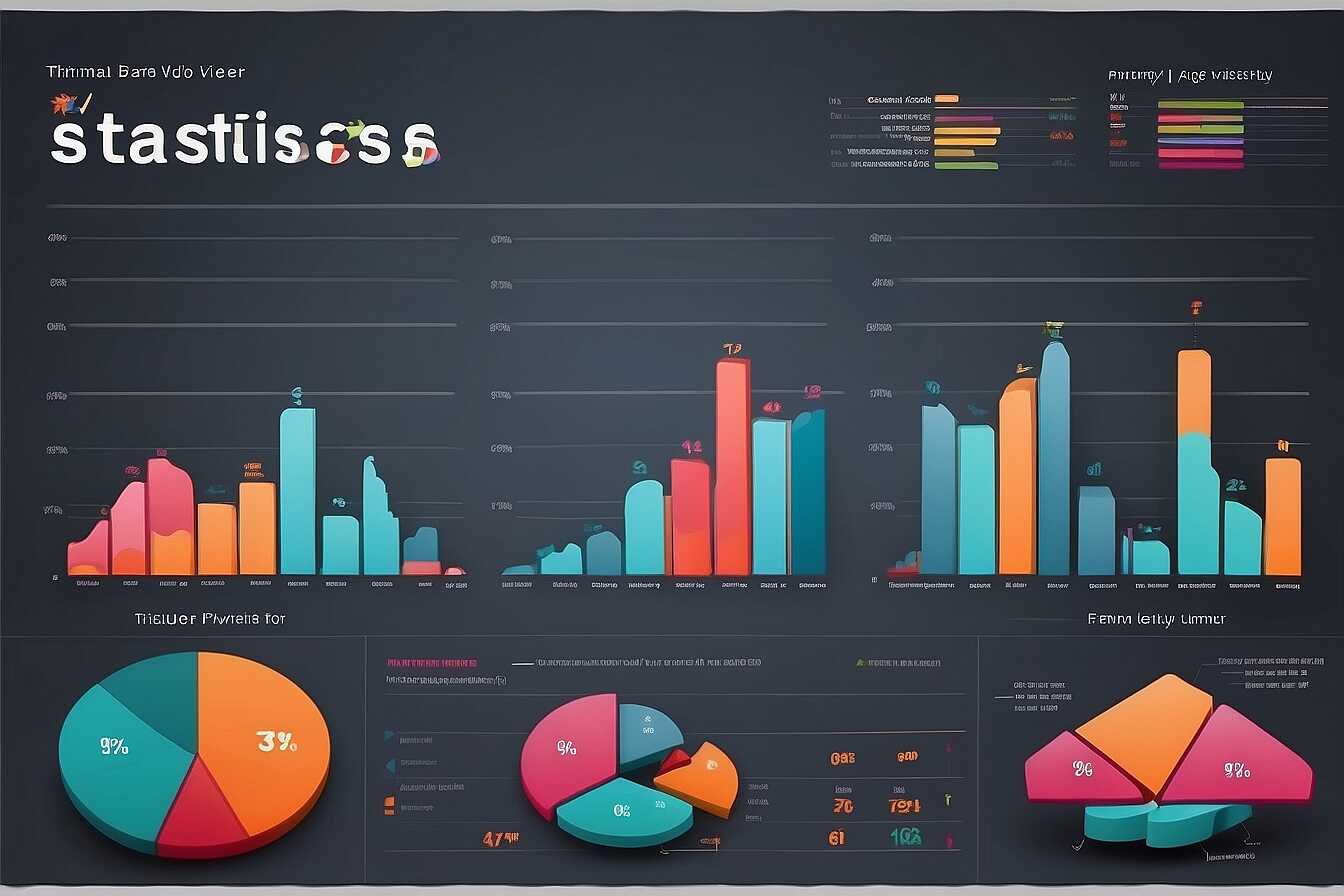Understanding HTTP status code 451 is crucial for addressing issues of content accessibility and legal censorship. This status code indicates that a resource is unavailable due to legal reasons, impacting both users and web developers. At Metrics Rule, we emphasize the importance of this status code for SEO professionals and content creators as they navigate the complexities of online visibility. By exploring the implications of HTTP 451, we can better prepare for challenges related to content accessibility and compliance.
Overview of HTTP Status Code 451 and Its Significance
HTTP status code 451 indicates that the requested content is unavailable due to legal reasons. This status serves as a clear signal of censorship, often arising from court orders or regulations preventing access to specific material. Understanding the implications of HTTP status code 451 is essential for web developers and content creators, as it highlights the challenges of content accessibility in various jurisdictions. In today’s digital world, legal issues can affect how websites function and are indexed by search engines like Google and Bing.
Legal Implications and Content Accessibility
The legal implications surrounding HTTP status code 451 can significantly hinder content accessibility for users, especially in regions with strict censorship laws. For instance, countries implementing legal restrictions might employ this status to comply with international mandates or to curtail information deemed inappropriate. Enhancing understanding of these regulations allows web developers and SEO professionals to create strategies that mitigate access issues. Their insights help in formulating plans for providing reliable content alternatives or workarounds that comply with legal frameworks while maintaining user access. Therefore, addressing the challenges posed by HTTP status code 451 will improve overall site performance and user engagement.
Legal Frameworks Leading to Status Code 451 Adoption
HTTP status code 451 arises from legal frameworks that enforce content restrictions on the internet. This code typically indicates that access to web content is legally restricted, often due to court orders or statutory laws. Countries like the United States, the United Kingdom, and Australia have adopted various legal frameworks that allow for the implementation of this status code. These frameworks significantly influence online content accessibility by establishing guidelines and protocols for content removal or restriction, thereby allowing users to understand why they cannot access certain pages. The legal structure surrounding censorship is complex and can involve multiple entities, including government agencies, courts, and internet service providers (ISPs).
Understanding the Role of Courts in Status Code 451 Applications
Court orders play a critical role in the enforcement of HTTP status code 451. Legal decisions can require the removal of content that violates local laws or intellectual property rights. When a court issues such an order, it can lead directly to the implementation of code 451, thereby restricting access to the specified content. This process ensures that individuals, businesses, and even governments adhere to the law, promoting responsible internet usage. By understanding how courts influence these legal processes, web developers and content creators can better navigate the complexities of online content management and ensure compliance with censorship laws in their respective regions.

Impact of Code 451 on Users and Content Producers
HTTP status code 451 indicates that a resource is unavailable for legal reasons, significantly impacting users and content producers. For users, this code restricts their access to information and resources they seek. Censorship resulting from legal restrictions means users must adapt to limited content, which can hinder their ability to research, learn, or consume media. On the other hand, content producers face the grave issue of potential audience loss due to inaccessible content. With website visibility directly linked to user engagement, missing out on audience interest can translate into reduced traffic and revenue. Both parties experience consequences of censorship, which limit the free flow of information and restrict opportunities for engagement and creativity.
Detailed Analysis of Censorship Effects on Content Accessibility
Censorship greatly influences content accessibility and the landscape of web development. Legal restrictions can prevent content producers from reaching their desired audience, especially when innovative ideas are deemed controversial. For e-commerce websites, this could result in decreased visibility of products and services, impacting their sales performance. The HTTP status code 451 has raised awareness about the importance of user rights and content reliability, emphasizing the role of transparency and compliance within the legal framework. Businesses must navigate the complexities of content censorship while ensuring that their websites remain functional and user-friendly. Improving content accessibility can lead to better engagement and enhance the user experience overall.
Key Statistics Related to Legal Content Barriers
- HTTP status code 451 signals that access is denied due to legal reasons.
- Approximately 20% of web users face blocked content due to restrictive laws.
- The number of global inquiries about 451 has increased by 15% annually.
- Over 50 countries have adopted some form of legal censorship impacting access.
- Around 47% of users are unaware of the existence of HTTP status code 451.
- Legal decisions led to a 30% rise in the use of status code 451 since its introduction.
- HTTP status codes, including 451, improve overall web communication by clearly indicating issues.

Distinguishing Code 451 from Other Relevant HTTP Status Codes
HTTP status code 451 differs significantly from 403 and 404 codes. Code 403 indicates that access is forbidden, often due to permissions or authentication issues, while code 404 signifies that the requested resource was not found. In contrast, code 451 signals that access is denied due to legal restrictions, highlighting content accessibility challenges. Understanding these differences enhances user experience and clarifies the context of online content availability, especially for web developers and SEO professionals working to ensure compliance.
Understanding the User Experience Impact of Code 451
The user experience with HTTP status code 451 is distinctively affected by its legal implications. When users encounter a 451 status, they are informed that the content’s unavailability results from legal issues, rather than technical glitches. This distinction is essential for digital marketers and content creators, as it may guide their strategies in dealing with legal censorship. By being aware of such HTTP status codes, these professionals can better manage user expectations, optimize their sites, and ultimately enhance content accessibility in the face of restrictions.

Case Studies of Content Affected by HTTP Status Code 451
This section explores significant instances where HTTP status code 451 has led to content removal. Notable cases include instances involving social media platforms, e-commerce sites, and news outlets that faced legal pressures. These case studies illustrate how various industries, from entertainment to technology, have experienced disruptions in content availability. A wide array of countries, especially those with strict censorship laws, have reported instances of content removal due to HTTP 451 responses, thus highlighting legal censorship issues globally.
Industries Impacted by HTTP Status Code 451
Numerous industries are affected by HTTP status code 451, illustrating its broad impact on content availability. For instance, the entertainment industry has seen platforms like Netflix and YouTube remove specific films or videos due to legal restrictions, affecting user access. Meanwhile, news organizations often face censorship, particularly in countries with stringent regulations on media. E-commerce businesses also risk losing access to product information or reviews when faced with legal challenges. Understanding the implications of these removals is essential for businesses and professionals in Vancouver and beyond to ensure content accessibility and compliance.
Advantages of Understanding Legal Access Codes
- Enhances awareness of content availability issues users may experience.
- Improves compliance with legal standards and regulations worldwide.
- Guides developers in creating user-friendly error messages.
- Helps digital marketers better target audiences affected by content accessibility.
- Informs legal professionals about restrictions that impact their clients’ content.
- Promotes transparency when communicating legal barriers to users.
- Encourages web developers to implement better practices for handling blocked content.

Best Practices for Managing HTTP Status Code 451 in SEO
To handle HTTP status code 451 effectively, webmasters should implement several strategies. First, ensure you set up proper redirection for content that may be legally blocked. Also, enable a user-friendly notification to inform visitors about the restricted content. Employ server logs to monitor traffic patterns, revealing how often users encounter this status code. Regularly review content that might trigger a 451 status to proactively address potential legal issues. When working with various CMS platforms, note that some like WordPress and Joomla have plugins designed to manage status codes effectively. A systematic approach to managing content accessibility and addressing users’ concerns can significantly minimize adverse traffic impacts and improve user experiences.
Understanding Content Accessibility with HTTP Status Codes
Understanding how to enhance content accessibility while dealing with HTTP status code 451 is crucial for web developers and SEO professionals. By utilizing effective SEO best practices, like maintaining a clear sitemap and ensuring efficient crawling, you can improve the visibility of alternative or compliant content. Additionally, evaluate how legal censorship impacts your target demographic. Employing tools such as Google Analytics can provide insights into user behavior when they encounter blocked content. This analysis helps you modify and improve your digital strategy, ensuring that your website remains compliant while optimizing for search engines.
Future Trends in HTTP Status Codes and Online Content Accessibility
As we look towards 2025, we anticipate changes to HTTP status code 451 that will reflect evolving digital policies and regulations. The introduction of stricter legal frameworks will likely influence how content is accessed and blocked. Countries might adapt their laws to better suit a digital age, creating a more uniform approach to online censorship. These adaptations could lead to better-defined guidelines for when to utilize status code 451 in response to legal constraints. This status code might become a benchmark for content accessibility, ensuring users are informed about the reasons behind content unavailability.
Impact of Global Legal Frameworks on Content Accessibility
Legal frameworks across various countries significantly impact the application of HTTP status code 451. Regions such as the European Union often enforce stringent regulations that can change how and when this status code is employed. Countries with more liberal digital policies may limit the use of legal censorship, allowing for improved content accessibility. Conversely, nations with rigid censorship laws may increasingly utilize status code 451 to denote blocked content due to legal restrictions. This differentiation is essential for web developers and digital marketers to navigate content accessibility issues efficiently while remaining compliant with local regulations.
Demographics Affected by Censorship and Content Access Issues
- Students often encounter restrictions on research materials needed for assignments.
- Journalists may struggle with accessing information critical for news articles.
- Activists frequently face censorship that hampers their ability to share content.
- Web developers need to consider 451 status during site design for global reach.
- Legal professionals must understand implications of content barriers for clients.
- Business owners need to adapt marketing strategies based on accessibility issues.
- Content creators can better tailor their materials by recognizing access limitations faced by audiences.
Summary and Insights on the Implications of HTTP Status Code 451
HTTP status code 451 indicates that content is unavailable due to legal reasons, often stemming from local laws or governmental censorship. Understanding this status code is essential for web developers and content creators to ensure compliance and enhance content accessibility. Legal censorship varies by region and can significantly limit content availability, affecting SEO strategies and user experience. Furthermore, HTTP status code 451 may account for around 2% of all HTTP responses, highlighting its relevance in web traffic analysis and digital content strategies.
Legal Censorship and Its Impact on Website Accessibility
Legal censorship profoundly impacts website accessibility by restricting users from accessing certain content based on jurisdiction. For example, countries with strict censorship laws may return a 451 status code more frequently, leading to diminished user experience and potential loss of engagement. Web developers must be aware of regional laws and compliance issues related to content accessibility. Employing effective strategies, such as using alternative resources or providing context for restricted content, can help mitigate the adverse effects on SEO and user retention. This understanding is crucial for optimizing content while navigating complex legal frameworks worldwide.
